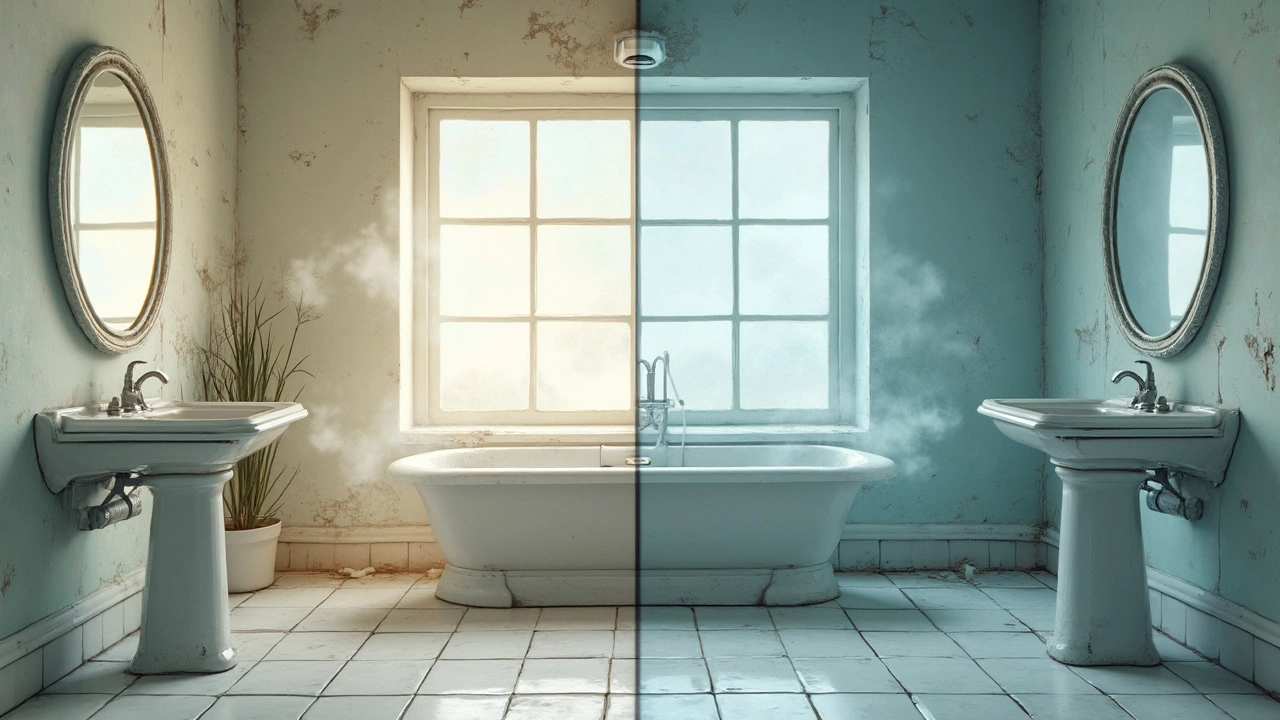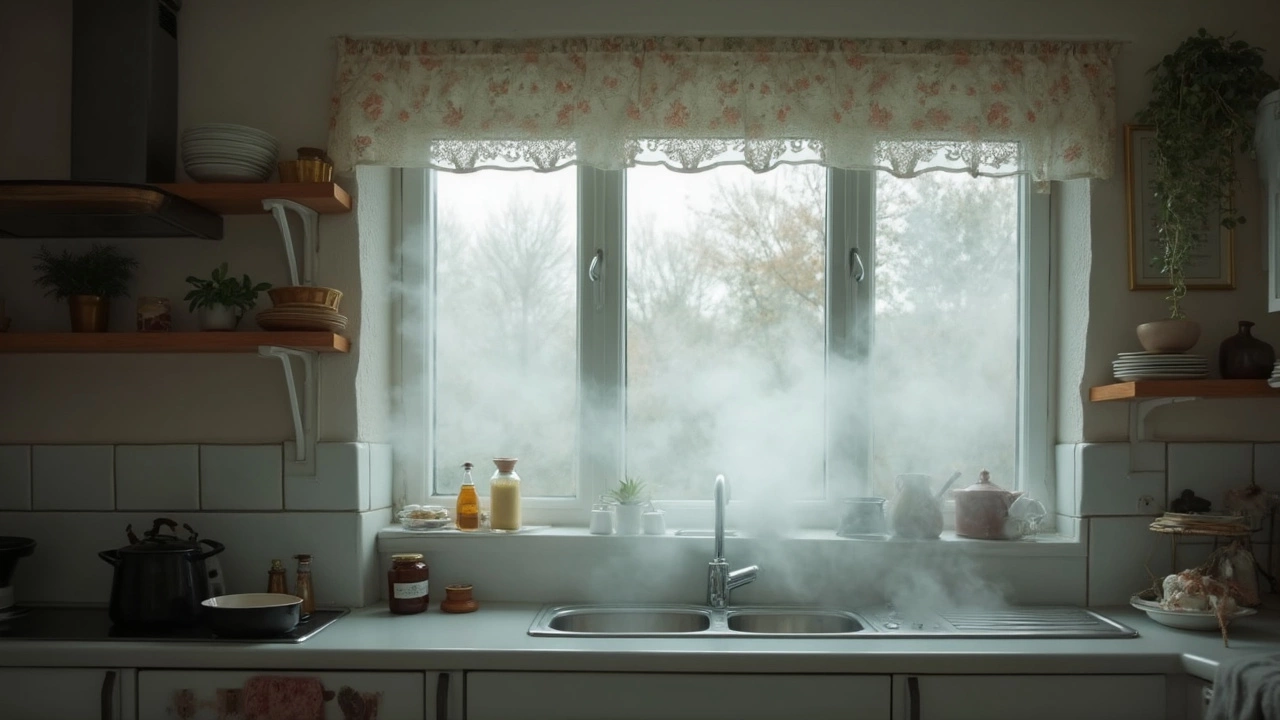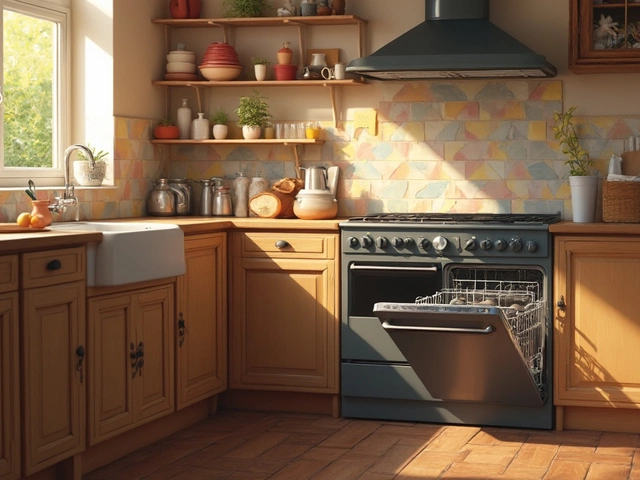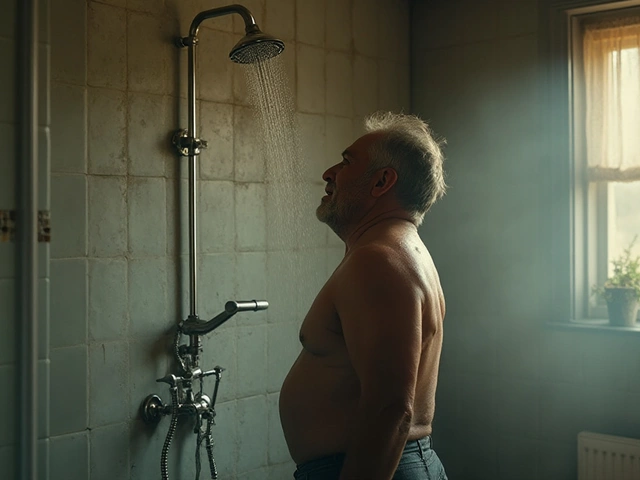So you’re looking at your kitchen or bathroom ceiling, wondering if it’s really a big deal you don’t have an extractor fan. Here’s the thing—extractor fans are there for much more than just whisking away that bacon smell or clearing steamy mirrors. They help prevent moisture buildup, which over time can mean mold on your walls, peeling paint, or even that suspicious black line creeping up the corner you keep ignoring.
Skipping an extractor fan might seem harmless, especially if you’re in an older home that never had one to begin with. But here’s a practical heads-up: daily stuff like showers, boiling pasta, or even just making a strong coffee all pump a crazy amount of moisture into the air. Without any way out, this moisture hangs around, grabs onto cold spots, and before you know it, you’re scrubbing mold off your window frames. Most people only notice it’s a problem once it’s become a weekly cleaning chore.
- What an Extractor Fan Actually Does
- The Problems You Might Face Without One
- When Can You Legally Skip an Extractor Fan?
- DIY & Temporary Fixes People Use
- What to Know About Repairs and Maintenance
- Tips for Living Without an Extractor Fan
What an Extractor Fan Actually Does
Extractor fans aren't just random spinning things up in your ceiling. Their main job is to kick out humid air, smells, fumes, and even tiny grease particles you can’t see. In kitchens, this means that strong onion odor or the heavy, sticky air after frying isn’t hanging around, sinking into your curtains or walls. In bathrooms, these fans clear out that thick, damp air after showers, making your tiles and mirrors less likely to fog or grow mold spots.
The way they work is pretty straight up. There’s a small powered fan inside a vent. This fan grabs air from inside your room and pushes it outside through a duct (or sometimes into a filter—those are called recirculating fans). The difference with just opening a window? Fans get the job done even on days you’d freeze if you cracked a window, and they keep things moving faster and more reliably because they’re targeted at one problem area.
Here’s some quick, useful numbers for the nerds out there:
| Room Type | Recommended Air Changes (per hour) | Typical Fan Power (m³/hour) |
|---|---|---|
| Kitchen | 15-20 | 150–300 |
| Bathroom | 8-10 | 80–110 |
What does this mean? For most home kitchens, your extractor fan will swap out all the air between 15 and 20 times an hour, making sure humidity and smells aren’t given the chance to settle. In a bathroom, the fan swaps out damp air 8 to 10 times an hour, so even the longest morning showers don’t wreck your ceiling.
If you’ve ever wondered why your neighbor’s house never smells like last night’s takeaway or why their bathroom stays mold-free, odds are good they’ve got a working extractor fan. It’s a simple fix that saves a ton of headaches later.
The Problems You Might Face Without One
Think you can do without an extractor fan? Here’s what’s actually at stake. The top issue is excess moisture that just won’t leave. When humidity builds up after a shower or while cooking, it turns cozy spaces into prime mold territory. Mold isn’t just gross—it ruins plaster, damages paint, and can mess with allergies or asthma, especially in kids or anyone sensitive to dust.
The next big thing is stubborn smells. Fry fish on Tuesday and your house still smells like a chip shop by Saturday. Odors from cooking, damp towels, or even sweaty trainers get stuck because the air has nowhere to go. Even opening a window isn’t great in the dead of winter—or with British weather most of the year, really.
It doesn’t stop there. You get:
- Condensation on windows—tiny pools that drip down and rot wooden frames.
- Peeling wall paint or bubbling wallpaper, especially in corners near ceilings.
- Warped wood or cupboards, which usually happens in kitchens near hobs.
- Rusty bathroom fixtures or kitchen sinks, since constant damp speeds up corrosion.
For homes with no extractor fan, keeping an eye on indoor humidity makes a real difference. Most UK homes should sit between 40% and 60% humidity indoors. Too high, and you risk all the stuff above. Here’s what can happen when humidity isn’t under control:
| Problem | Signs | Impact |
|---|---|---|
| Mold | Dark spots on walls/ceilings, musty smell | Health problems, expensive repairs |
| Condensation | Water on windows, damp patches | Rotting wood, damaged walls |
| Lingering odors | Unpleasant smells that stick around | Embarrassing home smell, tough to get rid of |
| Rust | Browning taps, flaky metal | Shorter lifespan for fixtures |
Without the right venting, even shiny new kitchens or bathrooms start to age faster. For families, you’re also looking at more regular cleaning just to keep things fresh and safe. This isn’t just about things looking nice—it’s about stopping deeper problems before you’re stuck with a repair bill nobody wants.
When Can You Legally Skip an Extractor Fan?
Here’s where things get real: whether you can legally skip an extractor fan depends completely on where you live, your home’s age, and what the room gets used for. Building codes in the UK are the big boss here, while in the US or Australia, it’s all about local or state rules. No fan? You could be breaking the rules, depending on your setup.
Take kitchens, for example. In England and Wales, Building Regulations Part F says you must have a way to deal with moist air. But it doesn’t force everyone to install a powered extractor fan, as long as there’s suitable ‘background ventilation’—think big, always-open air bricks or trickle vents in your windows. But if you’re ripping out your kitchen and starting fresh, the rules are stricter and expect a proper extractor if you’re doing major work.
Bathrooms are a bit different. Legally, any new bathroom without an opening window must have some kind of extractor fan. Got a window you can open wide? In older houses, the law tends to be less pushy, especially if you’re just swapping out a toilet or sink without major changes. But the second you go big with a renovation, inspectors will probably insist on a real fan.
- If your bathroom has no window, you need a fan: at least 15 litres per second extraction rate (UK standard).
- Existing homes that haven’t been refurbished usually aren’t forced to add one—unless damp or mold becomes a problem, then you could be told to upgrade.
- For rental properties, landlords are legally expected to keep homes free from “excess damp”—without reasonable ventilation, they can get hit with complaints or even fines.
It’s super common for people to ignore this stuff, but if you’re renting or trying to sell, a surveyor or building inspector will absolutely check. For kitchens, check if your cooker hood actually vents extractor fan air outside—not all do! Recirculating hoods don’t count for legal ventilation.
| Location | Minimum Requirement | Window Alternative |
|---|---|---|
| Kitchen (UK, post-2006) | Extractor fan, 30L/s above hob or 60L/s elsewhere | Permanent vent only if not a new build/major refurb |
| Bathroom (UK) | 15L/s extractor if no window | Openable window allowed in old homes, not in new builds |
So, unless your home is old and untouched, or you’ve always got a giant window open, most modern rules expect some sort of extractor—especially if you’re making big changes. If you’re not sure, local council websites actually spell this out in simple language, or there’s usually a number you can call for a human answer.

DIY & Temporary Fixes People Use
If you don’t have an extractor fan, there are some stopgap tricks people try to control moisture and smells. None of these beat a real fan, but when you’re renting or saving up for a proper install, they come in handy.
- Open windows: Old-school but still effective. Crack a window before, during, and after showering or cooking. The downside—if it’s freezing outside, or you’re on a busy street, this isn’t ideal.
- Portable dehumidifiers: These suck moisture from the air fast. Great in bathrooms after hot showers or in kitchens that get all steamed up. Watch your electricity bill, though—some models use as much as 300 watts per hour. Here’s a snapshot of average costs:
| Dehumidifier Size | Average Power (Watts) | Cost per Hour* (GBP) |
|---|---|---|
| Small (1-2L) | 60 | £0.02 |
| Medium (10-20L) | 300 | £0.10 |
| Large (over 20L) | 480 | £0.16 |
*Based on £0.34/kWh average UK electricity price mid-2025.
- Extractor fans with plug: In older homes people sometimes use kitchen or bathroom fans that plug into a standard outlet. They sit on a ledge or near a window; not stylish, but they do pull out humidity in a pinch.
- DIY door vents: Sawing or fitting a vent at the top or bottom of a bathroom or kitchen door isn’t glamorous, but it can help fresh air flow through, especially if you’ve got windows open on the other side.
- Absorbent crystals: You’ve probably seen those ‘Damp Rid’ containers at the shop. They soak up water from the air, but they only handle small spaces and need swapping every month or so.
When we lived in a rental with no fan, my kids Callum and Tamsin could draw smiley faces on the steamed-over bathroom mirror even a half hour after a shower. That told me everything—DIY options are fine for light use, but if you cook a lot or have a big family, you’ll notice the limits fast.
What to Know About Repairs and Maintenance
If you’ve got an extractor fan, keeping it in top shape isn’t just about cleaner air—it saves money and a lot of hassle. Fans filled with dust, grime, or grease have to work harder, chew up more electricity, and die sooner. It’s basic, but easy to forget: a fan left to its own devices becomes basically useless in about a year, sometimes less if you cook a lot or have pets.
Here are a few things that can go wrong with extractor fans and what you can actually do about it:
- Noisy operation: Rattling or grinding usually means the fan blades are dirty or loose. Sometimes, something’s stuck in there—like a bit of plastic or even a bug.
- Weak airflow: If the fan barely pulls any air anymore, it’s often clogged filters or blocked ducts. Grease is the main culprit in kitchens, while bathroom dust can slow things down fast.
- Fan stops working completely: Could be a dead motor or a blown fuse, but honestly, sometimes the wall switch just gives out.
To avoid spending on repairs that could have been dodged, regular cleaning is huge. You don’t need a toolbox, just a step-stool, mild soap, and a vacuum:
- Always switch the fan off at the isolator or power source.
- Remove the cover or grille—most just pop off or are fixed with a couple of screws.
- Wash the cover with warm, soapy water. Scrape off gunk if there’s grease buildup.
- Vacuum the fan blades and visible parts gently. A small toothbrush helps get in the corners.
- Check ducting (where possible) for any big blockages, especially in kitchen settings.
- Let everything dry out before reassembling and switching back on.
Most kitchen extractor fans need this kind of clean every 2-3 months, and bathroom fans every 4-6 months—unless you take epic showers like Callum does, then bump it up.
| Common Problem | DIY Fix? | When To Call A Pro |
|---|---|---|
| Noisy or vibrating | Yes, check for loose screws, clean blades | If noise stays after cleaning |
| Weak or no airflow | Yes, clean cover and check for blockages | Persistent low power, faulty wiring |
| Completely dead fan | Check fuse/sockets | No power, burnt motor smell, or wiring issues |
If replacing a fan, measure the duct size first—16cm is typical, but some UK flats use 10cm. Don’t forget about local recycling rules for old fans; they can’t just go in the bin. And if your fan is over ten years old or smells odd when running, that’s a hint it’s past its prime.
Finally, if you notice persistent damp after a DIY clean, or power issues that keep coming back, there’s no shame in calling a trusted electrician. They’ll spot stuff you might miss, and help you breathe easier—literally.
Tips for Living Without an Extractor Fan
No extractor fan? You’re not alone. Loads of homes—especially older ones—don’t have one, and people get by. But you’ve got to be a bit smart to keep things dry and healthy. First up, think like moisture. Where does steam go after a shower or when you’re boiling water? Straight up to the ceiling, then it clings to the coldest bit. If you’ve got no extractor fan, it’s all about getting that air moving out some other way.
- Open windows: Sounds basic, but it works. Even cracking a window during or after a shower/cooking will start to shift moisture. Wide-open is better, but even a small gap helps.
- Use door gaps: If you don’t want the whole house to get muggy, stuff a rolled-up towel under the door leading to the rest of the house and just open the outside window. That way, the moist air gets pushed out instead of spreading everywhere.
- Wipe down surfaces: After a shower, use a squeegee or towel on tiles, mirrors, and windows. It seriously cuts back on moisture hanging around and feeding mold.
- Portable dehumidifiers: These can work wonders. If you can spring for one, just plug it in after steamy activities. Handy for bathrooms and kitchens. Some models can collect over two liters of water per day.
- Keep doors open (sometimes): Right after the room has aired out a bit, leave doors open to boost airflow. Careful with bathrooms—you usually want to vent straight outside first.
- Try houseplants: Certain houseplants—like English ivy, Boston fern, and peace lilies—suck up a bit of moisture. Won’t replace a fan, but every little helps.
One tip I learned after years of scrubbing bathroom corners—watch for hidden damp spots: behind curtains, under window ledges, or around the toilet. These are the places everyone forgets, but mold loves.
“Good ventilation is the simplest and cheapest way to avoid most indoor humidity issues, even if your property is a bit old-fashioned,” says Sarah Peacock, a housing standards advisor at Home Vent Experts.
For folks who like numbers, check out how different methods stack up in reducing bathroom moisture after a 10-minute hot shower:
| Method | Approx. Moisture Reduction (within 30 min) |
|---|---|
| Window fully open | 70% |
| Window cracked 2 inches | 45% |
| Portable dehumidifier | 60% |
| Wiping surfaces (plus open window) | 85% |
| No action | 20% |
Bottom line—if you don’t have an extractor fan, you need to get creative and pay attention. It’s not rocket science, but it calls for a routine. My kids used to complain that I had them open windows like clockwork after showers, but now even they agree the extra work beats scrubbing mold every Saturday morning.







